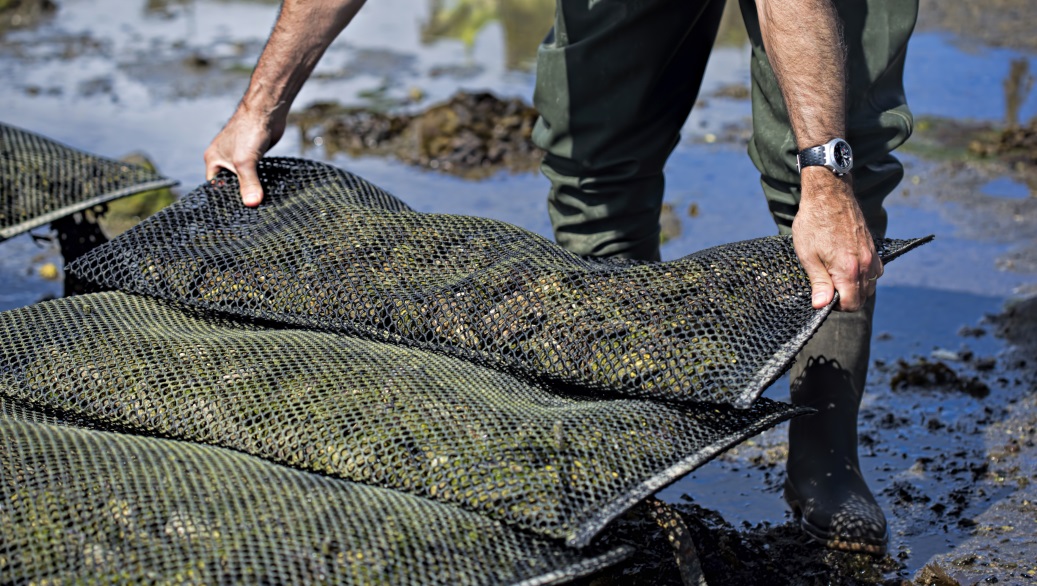On August 27, 2019, U.S. Senators Ben Cardin and Chris Van Hollen, with Congressman Steny Hoyer (all D-Md.) have announced $800,000 in federal funding for the Maryland Department of Natural Resources’ partners to restore oyster habitats throughout the Chesapeake Bay.
“It’s encouraging that Maryland will receive this critical funding for oyster restoration,” said Congressman Hoyer. “The health of the Bay and its tributaries is of the upmost importance to our region, and this funding will help restore oyster reefs critical to our watermen and our history. I will continue to work with my colleagues in Congress to improve the health of our environment in Maryland.”
This funding, provided by the National Oceanic and Atmospheric Administration (NOAA), will allow the Maryland Department of Natural Resources to work in conjunction with NOAA, the Oyster Recovery Partnership, and the University of Maryland Center for Environmental Science Horn Point Oyster Hatchery to place spat-on-shell on approximately 100 acres of oyster reefs in five target tributaries of the Chesapeake Bay: the Little Choptank River, the Tred Avon River, the St. Mary’s River, the Manokin River, and the Harris Creek.
This will increase oyster densities on the target sites, which are anticipated to be self-sustaining, and increase ecosystem services including water filtration, fish habitat for species including the federally listed shortnose and Atlantic sturgeon, and increased oyster spawning capacity.
“The Chesapeake Bay is Maryland’s most important natural resource. The restoration of its oyster population will help preserve the health of the Bay, stimulate local economic activity, and protect the coastline from storms and erosion,” said Senator Cardin, a senior member of the Senate Environment and Public Works Committee. “I will continue to advocate for strong federal funding for the Maryland institutions doing this critical work on the ground.”
NOAA, which is headquartered in Silver Spring, Maryland, is a scientific agency within the U.S. Department of Commerce that focuses on the conditions of the oceans, major waterways, and the atmosphere.
Oysters are a crucial component of global ocean health, providing food, jobs, and habitat. Oyster reefs also provide important barriers to storms and tides, preventing erosion and protecting productive estuary waters. NOAA has identified oyster reef restoration as a conservation priority.
The native oyster is an extremely resilient species, able to tolerate wide variations in salinity and temperature—but it has not been immune to the pressures of disease, over-harvesting, and pollution in the Chesapeake Bay. As a result, native oyster populations in Chesapeake Bay are at less than 1% of historic levels.
This tremendous decline in the oyster population has dramatically changed the ecology of the Bay as well as the oyster fishery and the cultural tradition of watermen who harvest seafood from the Bay for a living. One of the responses to this decline has been attempts to restore oyster populations. NOAA and its partners bring expertise and knowledge of the science and techniques behind oyster restoration to projects around the Bay.
NOAA is involved in oyster restoration projects at a number of locations around the Chesapeake Bay, including both in Maryland—in Harris Creek and the Tred Avon, Little Choptank, and St. Mary’s Rivers—and in Virginia in the Lafayette, Lynnhaven, Piankatank, Lower York, and Great Wicomoco Rivers.
“A thriving oyster population is central to a healthy Chesapeake Bay – and, in turn, the success of our economy and environment. This funding will help significantly increase oyster spawning, improve the overall health of the Bay, and boost our local economy,” concluded Senator Van Hollen, a member of the Senate Appropriations and Budget Committees. “I will keep working in Congress to ensure that innovative Bay restoration efforts like this have the resources they need, and that we protect and expand oyster reefs in Maryland and across the country.”
Photo of oyster reef restoration via Adobe Stock.

